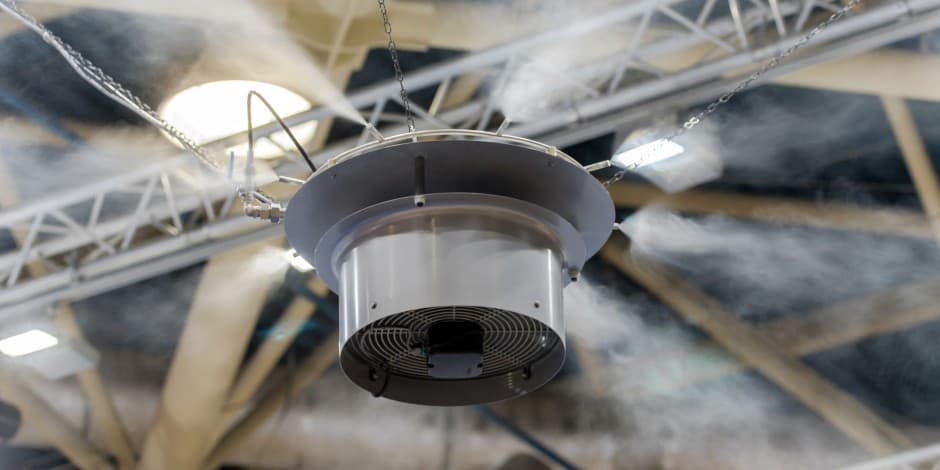Solar-Powered Pressure Pump Uses and Considerations

Shawn Glover, VP of Sales, Nov 9, 2021

Most high-pressure pump systems are able to rely on the electrical grid or fuel to maintain power for extended periods of time. However, there are remote regions where these traditional power sources may not be accessible.
That’s where the oldest source of energy in our galaxy can come to the rescue: the sun. Solar-powered pump systems may be an ideal solution in areas where electricity or refueling capabilities aren’t available, or for those who wish to use more sustainable practices.
Not all solar-powered systems are feasible, however, depending on the amount of flow required, geographic location, and other factors.
Here, we’ll look at ideal uses for solar-powered pump equipment and considerations to help ensure success.
Solar-Powered Pump Equipment Considerations
The first consideration when deciding whether a solar-powered pump system is an option is an application’s geographic location. As mentioned, remote locations without alternative power supplies may be ideal, but only if the region gets ample sunlight.
For example, a solar panel system used in Alaska during the winter months will likely not generate enough energy to adequately power a pump for very long due to the lack of sunlight. Those who use solar power to fuel their pumps need to assess its feasibility based on latitude and average sunlight.
Companies will configure 12V deep-cycle batteries that are properly sized to the solar panels and equipped with a voltage regulation system. Solar pump systems almost always use a regulator to help maintain consistent output. Otherwise, it will begin to run slower as the battery drains, similarly to how a cordless drill might lose power and torque without enough charge. The regulator on a pump system helps to ensure that the motor won’t slow down as the battery discharges and is especially important for overnight operation when batteries are being powered from stored electricity.
In general, solar-powered pumps need to have low flow rates and low energy consumption while still delivering fluids at high pressure. A high-volume application such as those used at wastewater treatment plants or to displace storm water, for example, would not be candidates for solar power because of their high output and excessive energy consumption.
So, which types of applications are solar-powered pump systems most suitable for?
Oil and Gas Industry
Pipelines used in the oil and gas industry may span thousands of miles across remote terrain that is difficult to access. Needless to say, these regions may be many miles from any available power source and impractical for use with gas-powered motors that need frequent refueling.
A solar-powered chemical injection pump injects solvents into oil pipelines at various locations to help coat the inner lining and keep oil from sticking to the surface. For natural gas, a small amount of antifreeze may be injected to keep any water that might be in the pipelines from freezing. In both these instances, the pump output is metered and will cycle on and off at set intervals. This helps ensure precise flow rates, extend the life of the motor, and also helps to conserve stored energy.
VIEW RELATED CASE STUDY: Oil & Gas Industry Solar Pump Application
Agricultural Misting and Evaporative Cooling
Golf courses, soccer fields, farms, botanical gardens, and other outdoor venues may use pyrethrin mosquito control misting systems to maintain an enjoyable experience for those who work and play in these areas. These types of atmospheres often don’t have access to electrical power. Venue operators also may not want the hassle of gas-powered units or the noise associated with combustible engine pump motors. Solar is an ideal power source, once again allowing for metered applications at precise flow rates.
Other uses might include evaporative cooling systems at outdoor festivals or theme parks that operate during hot, sunny days. Greenhouses that use misting systems for temperature and humidity control are also suitable candidates for solar-powered pump systems, and contribute to sustainable energy initiatives.
Reverse Osmosis and Desalination
Whether aboard a marine vessel at sea, on a deep wilderness excursion, or exploring the Australian outback, access to clean, drinkable water is critical. That’s where the process of reverse osmosis or desalination can literally save the day, removing bacteria and harmful particulates from seawater or ground water and turning it into potable, fresh water for consumption.
Those who rely on solar-powered water purification systems need assurance that the pump is reliable and durable enough to stand up to corrosion and the test of time. Most systems also need to be compact and transportable.
VIEW RELATED CASE STUDY: Reverse Osmosis — Goin’ Off the Grid
Choosing the Best Solar-Powered Pump
For reverse osmosis pumps and others used with harsh chemicals, such as the oil and gas industry and pest control, marine-grade stainless steel pumps with ceramic plungers are an ideal solution. They withstand harsh chemicals and elements, even when converting highly corrosive seawater into drinkable water.
Plunger pumps are preferred for use with the various types of solar-powered pump systems mentioned here because of their durability, but also because they can achieve high pressure up to 1,000 PSI while maintaining a consistent low flow rate and drawing minimal amperage. Plunger pumps can also be manufactured out of various materials, such as aluminum, stainless steel, ceramic, and others to achieve chemical compatibility when called for. As a rule of thumb, diaphragm pumps fail to hold up under harsh conditions and typically aren’t compatible with most chemicals, and centrifugal pumps draw too much power to maintain consistent and reliable operation.
Here at Pumptec, we’ve successfully integrated our 107SS series pump into various solar-powered applications with rechargeable batteries. Because of its compact size, quiet operation, and consistent flow and pressure, it’s an ideal solar pump solution.
Learn more about how to use plunger pumps in solar-powered applications for your customers by reaching out to our pump experts. We’re happy to talk through your challenges and find a solution.



